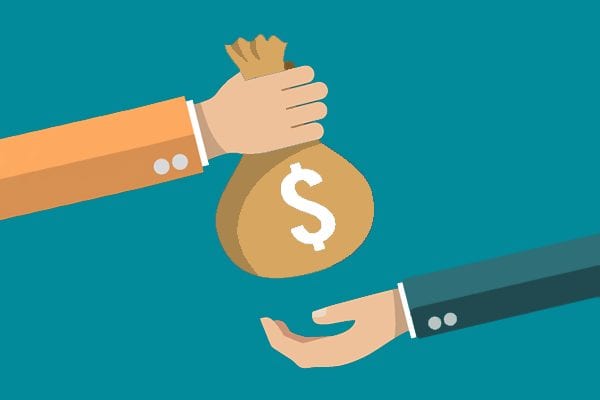How To Choose The Best Online Loan?
Loans may help you achieve major life goals you couldn’t otherwise afford, like enrolled or buying a home. There are loans for all sorts of actions, as well as ones will repay existing debt. Before borrowing anything, however, it’s important to be aware of type of mortgage that’s ideal to meet your needs. Listed here are the commonest forms of loans as well as their key features:

1. Loans
While auto and mortgage loans are designed for a particular purpose, signature loans can generally be utilized for anything you choose. Some individuals use them for emergency expenses, weddings or diy projects, for example. Loans are often unsecured, meaning they don’t require collateral. That they’ve fixed or variable rates and repayment regards to a couple of months to several years.
2. Automobile financing
When you purchase a car, a car loan allows you to borrow the cost of the vehicle, minus any advance payment. The automobile can serve as collateral and can be repossessed in the event the borrower stops paying. Car loans terms generally range between 36 months to 72 months, although longer car loan are becoming more established as auto prices rise.
3. Education loans
Education loans might help purchase college and graduate school. They are presented from the two government and from private lenders. Federal student education loans will be more desirable given that they offer deferment, forbearance, forgiveness and income-based repayment options. Funded from the U.S. Department of Education and offered as school funding through schools, they sometimes do not require a credit check needed. Loans, including fees, repayment periods and interest rates, are the same for each and every borrower with the same type of mortgage.
Education loans from private lenders, however, usually demand a appraisal of creditworthiness, every lender sets its car loan, interest levels expenses. Unlike federal student education loans, these loans lack benefits for example loan forgiveness or income-based repayment plans.
4. Mortgages
A home loan loan covers the retail price of an home minus any down payment. The property acts as collateral, which can be foreclosed from the lender if mortgage repayments are missed. Mortgages are normally repaid over 10, 15, 20 or 3 decades. Conventional mortgages usually are not insured by gov departments. Certain borrowers may be eligible for mortgages backed by gov departments such as the Federal Housing Administration (FHA) or Virtual assistant (VA). Mortgages could have fixed rates that stay from the time of the loan or adjustable rates that could be changed annually from the lender.
5. Home Equity Loans
A house equity loan or home equity personal line of credit (HELOC) allows you to borrow up to amount of the equity in your home for any purpose. Hel-home equity loans are quick installment loans: You recruit a one time and pay it back after a while (usually five to Three decades) in once a month installments. A HELOC is revolving credit. Much like credit cards, you are able to tap into the credit line as needed throughout a “draw period” and only pay the interest about the amount borrowed before the draw period ends. Then, you generally have Twenty years to the borrowed funds. HELOCs have variable interest rates; home equity loans have fixed rates of interest.
6. Credit-Builder Loans
A credit-builder loan was designed to help people that have a low credit score or no credit history grow their credit, and could not need a appraisal of creditworthiness. The bank puts the money amount (generally $300 to $1,000) in a savings account. Then you definately make fixed monthly premiums over six to Two years. Once the loan is repaid, you get the money back (with interest, occasionally). Before you apply for a credit-builder loan, make sure the lender reports it to the major services (Experian, TransUnion and Equifax) so on-time payments can boost your credit score.
7. Consolidation Loans
A debt loan consolidation is really a personal unsecured loan made to settle high-interest debt, for example credit cards. These refinancing options could help you save money if your interest rate is lower than that of your overall debt. Consolidating debt also simplifies repayment given it means paying just one single lender as an alternative to several. Paying off credit card debt with a loan is able to reduce your credit utilization ratio, getting better credit. Debt consolidation reduction loans might have fixed or variable rates of interest plus a selection of repayment terms.
8. Payday Loans
One kind of loan to stop is the cash advance. These short-term loans typically charge fees similar to annual percentage rates (APRs) of 400% or higher and should be repaid in full from your next payday. Available from online or brick-and-mortar payday loan lenders, these refinancing options usually range in amount from $50 to $1,000 , nor demand a credit check needed. Although pay day loans are easy to get, they’re often hard to repay punctually, so borrowers renew them, ultimately causing new fees and charges along with a vicious loop of debt. Loans or bank cards are better options if you’d like money with an emergency.
What Type of Loan Gets the Lowest Rate of interest?
Even among Hotel financing of the same type, loan interest rates can differ depending on several factors, such as the lender issuing the money, the creditworthiness in the borrower, the credit term and perhaps the loan is unsecured or secured. Normally, though, shorter-term or loans have higher rates of interest than longer-term or unsecured loans.
More details about Hotel financing take a look at our new internet page

Leave a Reply
You must be logged in to post a comment.